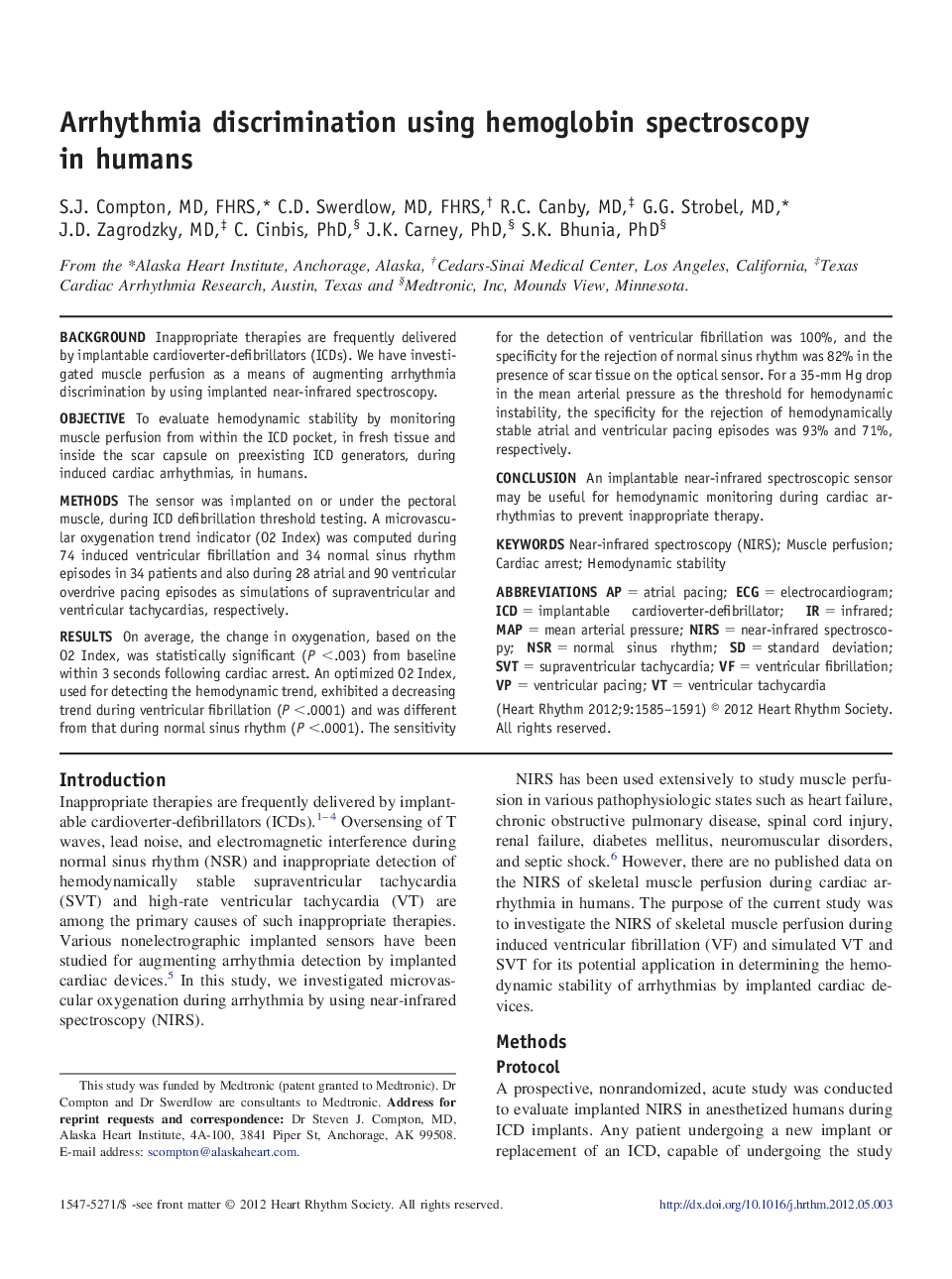| کد مقاله | کد نشریه | سال انتشار | مقاله انگلیسی | نسخه تمام متن |
|---|---|---|---|---|
| 2922595 | 1175850 | 2012 | 7 صفحه PDF | دانلود رایگان |

BackgroundInappropriate therapies are frequently delivered by implantable cardioverter-defibrillators (ICDs). We have investigated muscle perfusion as a means of augmenting arrhythmia discrimination by using implanted near-infrared spectroscopy.ObjectiveTo evaluate hemodynamic stability by monitoring muscle perfusion from within the ICD pocket, in fresh tissue and inside the scar capsule on preexisting ICD generators, during induced cardiac arrhythmias, in humans.MethodsThe sensor was implanted on or under the pectoral muscle, during ICD defibrillation threshold testing. A microvascular oxygenation trend indicator (O2 Index) was computed during 74 induced ventricular fibrillation and 34 normal sinus rhythm episodes in 34 patients and also during 28 atrial and 90 ventricular overdrive pacing episodes as simulations of supraventricular and ventricular tachycardias, respectively.ResultsOn average, the change in oxygenation, based on the O2 Index, was statistically significant (P <.003) from baseline within 3 seconds following cardiac arrest. An optimized O2 Index, used for detecting the hemodynamic trend, exhibited a decreasing trend during ventricular fibrillation (P <.0001) and was different from that during normal sinus rhythm (P <.0001). The sensitivity for the detection of ventricular fibrillation was 100%, and the specificity for the rejection of normal sinus rhythm was 82% in the presence of scar tissue on the optical sensor. For a 35-mm Hg drop in the mean arterial pressure as the threshold for hemodynamic instability, the specificity for the rejection of hemodynamically stable atrial and ventricular pacing episodes was 93% and 71%, respectively.ConclusionAn implantable near-infrared spectroscopic sensor may be useful for hemodynamic monitoring during cardiac arrhythmias to prevent inappropriate therapy.
Journal: Heart Rhythm - Volume 9, Issue 10, October 2012, Pages 1585–1591